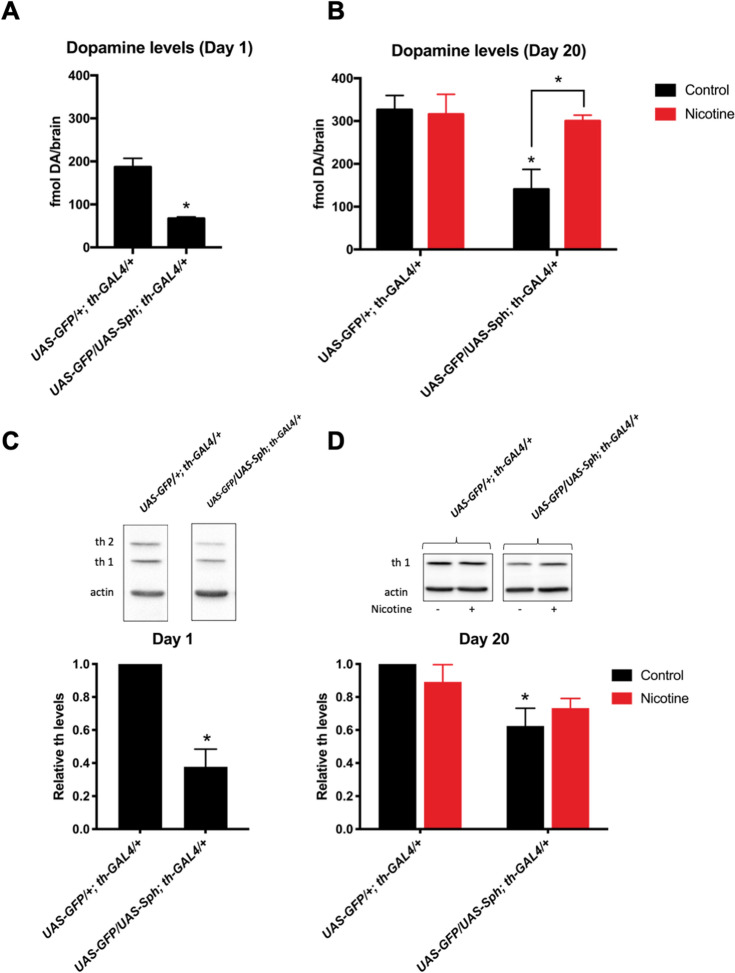Figure 6.
Nicotine exposure increases brain dopamine and tyrosine hydroxylase levels. (A) Newly eclosed flies (one day old) that express Sph-1 (UAS-GFP/UAS-Sph; th-GAL4/+) show reduced dopamine brain levels compared with control (UAS-GFP/+; th-GAL4/+) flies. *p < 0.05, t-test (B) After 20 days of aging, dopamine levels are reduced in animals that express Sph-1 compared with control flies (#p < 0.05). 20 days of chronic nicotine treatment induces an increase in dopamine brain levels in Sph-1 expressing flies (*p < 0.05) so amine brain content becomes similar to levels recorded in control flies. Dopamine levels in control animals are not affected by the nicotine treatment. In each case, data from controls were represented in black bars; data from animals treated with nicotine were represented in red bars. Statistical analysis after two-way ANOVA and Tuckey’s post-hoc test (n = 5 samples, each consisting of 5 fly brains). (C) At day one, tyrosine hydroxylase isoform 1 (th1) protein levels are reduced in flies that express Sph-1 (UAS-GFP/UAS-Sph; th-GAL4/+) when compared with control flies (UAS-GFP/+; th-GAL4/+), as can be observed in a representative experiment (top panel) in young flies. The higher MW cuticle-specific tyrosine hydroxylase isoform 2 (th2) can also be detected; this isoform stops being expressed as soon as the fly´s cuticle is melanized and cannot be detected in aged flies. Quantification of several blots from independent experiments (bottom panel) show significant reduction in tyrosine hydroxylase protein levels (th1). *P < 0.05; t-test compared with control strain; n = 3 different samples obtained from independent groups of animals. (D) At day twenty, untreated Sph-1 expressing flies show lower tyrosine hydroxylase levels compared with control animals, as evidenced in a typical experiment (top panel). Quantification of several blots from three independent biological samples (bottom panel) show a significant lower protein expression in Sph-1 expressing flies (*P < 0.05). Nicotine treatment promotes an increase of tyrosine hydroxylase to normal levels compared with the control genotype (p > 0.05). Statistical analyses with two-way ANOVA and Tuckey’s post-hoc test, in n = 3 independent samples. In all cases experimental animals were treated with 24 µM nicotine, full blots used for quantifications are shown in Supplementary Fig. 4.

